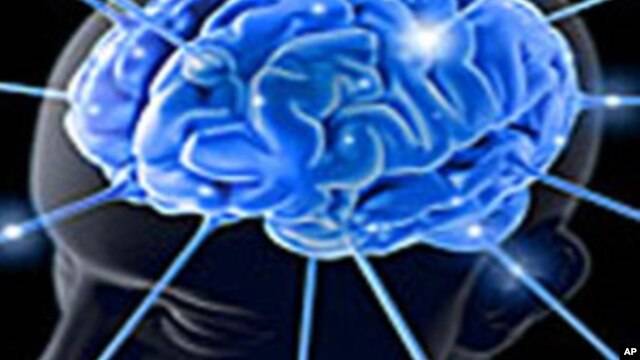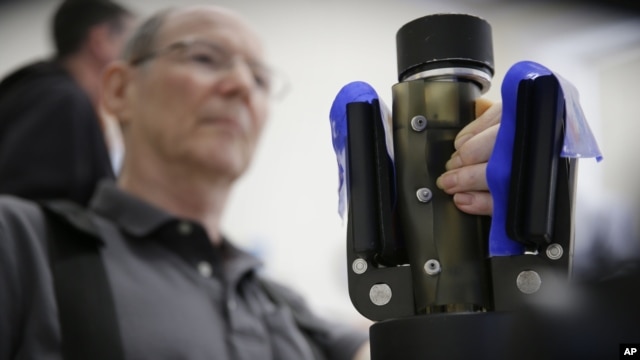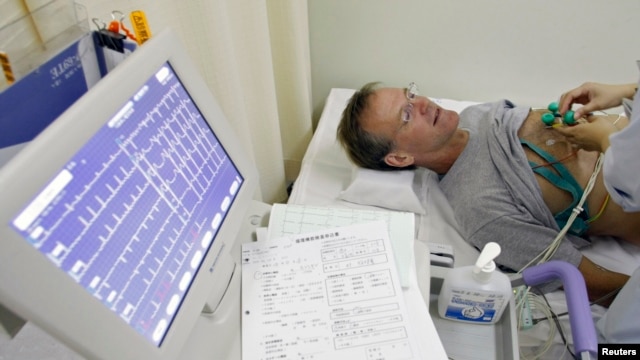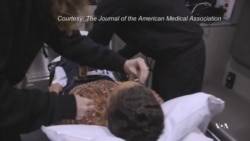ScienceRocks
Democrat all the way!
- Banned
- #1
Study points to potential treatment for stroke
April 24, 2012 in Cardiology
Stanford University School of Medicine neuroscientists have demonstrated, in a study to be published online April 24 in Stroke, that a compound mimicking a key activity of a hefty, brain-based protein is capable of increasing the generation of new nerve cells, or neurons, in the brains of mice that have had strokes. The mice also exhibited a speedier recovery of their athletic ability.
These results are promising, because the compound wasn't administered to the animals until a full three days after they had suffered strokes, said the study's senior author, Marion Buckwalter, MD, PhD, an assistant professor of neurology and neurological sciences. This means that the compound works not by limiting a stroke's initial damage to the brain, but by enhancing recovery.
This is of critical significance, said Buckwalter, a practicing clinical neurologist who often treats recently arrived stroke patients in Stanford Hospital's intensive care unit.
"No existing therapeutic agents today enhance recovery from stroke," Buckwalter said. "The only approved stroke drug, tissue plasminogen activator, can bust up clots that initially caused the stroke but does nothing to stimulate the restoration of brain function later." Furthermore, to be effective, tPA has to be given within four and a half hours after a stroke has occurred, she added. "In real life, many people don't get to the hospital that quickly. They may live alone or have their stroke while sleeping, or they and the people close to them didn't recognize the stroke's symptoms well enough to realize they'd just had one."
Looking for an alternative, Buckwalter chose to focus on a compound called LM22A-4, which had shown promise in previous research. LM22A-4 is a small molecule whose bulk is less than one-seventieth that of the brain protein it mimics: brain-derived neurotrophic factor, a powerful and long-studied nerve growth factor. BDNF is critical during the development of the nervous system and known to be involved in important brain functions including memory and learning.
Stem-cell therapy, while an exciting prospect, is a relatively invasive and expensive way to replace lost or damaged tissue. A drug that could achieve similar results in such a delicate and complex organ as the brain would be a welcome development.
"This small molecule stimulates the brain's own stem cells to form new neurons and therefore may be achieving many of the same things a stem-cell transplant would achieve, albeit with a less spectacular technology," said Frank Longo, MD, PhD, professor and chair of neurology and neurological sciences and a co-author of the study. "It represents an entirely new approach for treating conditions for which we have nothing now."
Longo, who is the George E. and Lucy Becker Professor in Medicine, and his laboratory colleagues identified LM22A-4 as a potential BDNF mimic in 2011, in collaboration with neurologist Stephen Massa, MD, PhD, at the University of California-San Francisco. (Massa is also listed as a study co-author.)
About 800,000 people suffer a stroke each year in the United States, making it the nation's leading cause of long-term disability. The older we get, the more susceptible to stroke we become, and the harder it is for us to recover. One contributing factor, some have hypothesized, is that BDNF production in the brain tapers off as we get older.
In the new study, Buckwalter's team induced severe strokes on one side of the brain in adult laboratory mice that had been previously trained in several distinct athletic tasks. Three days afterward, the researchers administered once-daily intranasal doses of LM22A-4 in a solution to one group of the mice, while giving another group (who had suffered strokes as severe as those in the first group) a similar dose of the same solution without any LM22A-4 in it. Delaying the first dose for three days better tests the ability of this treatment to help stroke patients in the real world, Buckwalter said.
Dosing proceeded for 10 weeks, while the scientists monitored both the animals' recovery of their motor skills and the numbers of new nerve cells in areas of the mice's brains that had been damaged by strokes.
Mice receiving LM22A-4 regained their athletic prowess considerably more quickly than those given the dummy solution: both the accuracy of their foot placement and the swing speed of the limb on the side of their bodies affected by the stroke improved more rapidly. Moreover, analysis revealed twice as many new nerve cells in these mice's stroke-affected brain areas, at six and 10 weeks after the event, than in those of their LM22A-4-denied counterparts.
For recovering patients, walking speed is critical, said Buckwalter. "A major factor in their ability to retain their independence and regain their self-confidence lies in their recovering the ability to get around on their feet," she said.
The promise of LM22A-4, for stroke and possibly other indications as well, turns on both its resemblance to and its difference from the protein BDNF.
Reduced BDNF Ievels in the brain are observed as well in neurological disorders such as Alzheimer's and Huntington's disease, said Longo. And in October 2011, Ahmad Salehi, MD, PhD, clinical associate professor of psychiatry and behavioral sciences at Stanford, and his collaborators found that different variants of the gene coding for BDNF are associated with correspondingly different rates at which cognitive ability declines with age.
The notion of pharmacologically increasing the brain's stores of BDNF, while tempting, is impractical, said Longo. "Being a protein, BDNF has a very short half-life in the blood before it's degraded, and it penetrates the blood-brain barrier very poorly," he said. "Plus, not all of the many things this complex protein does are really understood, or necessarily even helpful."
No molecule as small as LM22A-4 could possibly perform all the functions of the gigantic, many-faceted BDNF protein that it imitates. But this limitation may work to its advantage. Importantly, LM22A-4 binds to and activates only one of two major cell-surface receptors for BDNF found in nerve cells. The receptor LM22A-4 activates is associated with BDNF's long-known ability to foster the survival of newborn nerve cells, while the receptor it doesn't activate has been shown to respond to BDNF stimulation by inducing the death of nerve cells helpful, perhaps, during early development when the brain needs to prune redundant nerve circuitry produced in a series of growth spurts, but presumably counterproductive after a stroke, when new nerve-cell growth and connectivity need to be encouraged. In addition, LM22A-4 has a longer half-life in the body and has superior ability to get into the brain than BDNF does. These differences may make LM22A-4 better-suited for drug development than a compound that stimulated both receptors.
The University of North Carolina at Chapel Hill and UCSF, where Longo worked before coming to Stanford, hold the patent for LM22A-4 for use in treating stroke. While at UNC, Longo also founded PharmatrophiX, a company focused on the commercial development of small molecules similar to and including LM22A-4.
Study points to potential treatment for stroke
April 24, 2012 in Cardiology
Stanford University School of Medicine neuroscientists have demonstrated, in a study to be published online April 24 in Stroke, that a compound mimicking a key activity of a hefty, brain-based protein is capable of increasing the generation of new nerve cells, or neurons, in the brains of mice that have had strokes. The mice also exhibited a speedier recovery of their athletic ability.
These results are promising, because the compound wasn't administered to the animals until a full three days after they had suffered strokes, said the study's senior author, Marion Buckwalter, MD, PhD, an assistant professor of neurology and neurological sciences. This means that the compound works not by limiting a stroke's initial damage to the brain, but by enhancing recovery.
This is of critical significance, said Buckwalter, a practicing clinical neurologist who often treats recently arrived stroke patients in Stanford Hospital's intensive care unit.
"No existing therapeutic agents today enhance recovery from stroke," Buckwalter said. "The only approved stroke drug, tissue plasminogen activator, can bust up clots that initially caused the stroke but does nothing to stimulate the restoration of brain function later." Furthermore, to be effective, tPA has to be given within four and a half hours after a stroke has occurred, she added. "In real life, many people don't get to the hospital that quickly. They may live alone or have their stroke while sleeping, or they and the people close to them didn't recognize the stroke's symptoms well enough to realize they'd just had one."
Looking for an alternative, Buckwalter chose to focus on a compound called LM22A-4, which had shown promise in previous research. LM22A-4 is a small molecule whose bulk is less than one-seventieth that of the brain protein it mimics: brain-derived neurotrophic factor, a powerful and long-studied nerve growth factor. BDNF is critical during the development of the nervous system and known to be involved in important brain functions including memory and learning.
Stem-cell therapy, while an exciting prospect, is a relatively invasive and expensive way to replace lost or damaged tissue. A drug that could achieve similar results in such a delicate and complex organ as the brain would be a welcome development.
"This small molecule stimulates the brain's own stem cells to form new neurons and therefore may be achieving many of the same things a stem-cell transplant would achieve, albeit with a less spectacular technology," said Frank Longo, MD, PhD, professor and chair of neurology and neurological sciences and a co-author of the study. "It represents an entirely new approach for treating conditions for which we have nothing now."
Longo, who is the George E. and Lucy Becker Professor in Medicine, and his laboratory colleagues identified LM22A-4 as a potential BDNF mimic in 2011, in collaboration with neurologist Stephen Massa, MD, PhD, at the University of California-San Francisco. (Massa is also listed as a study co-author.)
About 800,000 people suffer a stroke each year in the United States, making it the nation's leading cause of long-term disability. The older we get, the more susceptible to stroke we become, and the harder it is for us to recover. One contributing factor, some have hypothesized, is that BDNF production in the brain tapers off as we get older.
In the new study, Buckwalter's team induced severe strokes on one side of the brain in adult laboratory mice that had been previously trained in several distinct athletic tasks. Three days afterward, the researchers administered once-daily intranasal doses of LM22A-4 in a solution to one group of the mice, while giving another group (who had suffered strokes as severe as those in the first group) a similar dose of the same solution without any LM22A-4 in it. Delaying the first dose for three days better tests the ability of this treatment to help stroke patients in the real world, Buckwalter said.
Dosing proceeded for 10 weeks, while the scientists monitored both the animals' recovery of their motor skills and the numbers of new nerve cells in areas of the mice's brains that had been damaged by strokes.
Mice receiving LM22A-4 regained their athletic prowess considerably more quickly than those given the dummy solution: both the accuracy of their foot placement and the swing speed of the limb on the side of their bodies affected by the stroke improved more rapidly. Moreover, analysis revealed twice as many new nerve cells in these mice's stroke-affected brain areas, at six and 10 weeks after the event, than in those of their LM22A-4-denied counterparts.
For recovering patients, walking speed is critical, said Buckwalter. "A major factor in their ability to retain their independence and regain their self-confidence lies in their recovering the ability to get around on their feet," she said.
The promise of LM22A-4, for stroke and possibly other indications as well, turns on both its resemblance to and its difference from the protein BDNF.
Reduced BDNF Ievels in the brain are observed as well in neurological disorders such as Alzheimer's and Huntington's disease, said Longo. And in October 2011, Ahmad Salehi, MD, PhD, clinical associate professor of psychiatry and behavioral sciences at Stanford, and his collaborators found that different variants of the gene coding for BDNF are associated with correspondingly different rates at which cognitive ability declines with age.
The notion of pharmacologically increasing the brain's stores of BDNF, while tempting, is impractical, said Longo. "Being a protein, BDNF has a very short half-life in the blood before it's degraded, and it penetrates the blood-brain barrier very poorly," he said. "Plus, not all of the many things this complex protein does are really understood, or necessarily even helpful."
No molecule as small as LM22A-4 could possibly perform all the functions of the gigantic, many-faceted BDNF protein that it imitates. But this limitation may work to its advantage. Importantly, LM22A-4 binds to and activates only one of two major cell-surface receptors for BDNF found in nerve cells. The receptor LM22A-4 activates is associated with BDNF's long-known ability to foster the survival of newborn nerve cells, while the receptor it doesn't activate has been shown to respond to BDNF stimulation by inducing the death of nerve cells helpful, perhaps, during early development when the brain needs to prune redundant nerve circuitry produced in a series of growth spurts, but presumably counterproductive after a stroke, when new nerve-cell growth and connectivity need to be encouraged. In addition, LM22A-4 has a longer half-life in the body and has superior ability to get into the brain than BDNF does. These differences may make LM22A-4 better-suited for drug development than a compound that stimulated both receptors.
The University of North Carolina at Chapel Hill and UCSF, where Longo worked before coming to Stanford, hold the patent for LM22A-4 for use in treating stroke. While at UNC, Longo also founded PharmatrophiX, a company focused on the commercial development of small molecules similar to and including LM22A-4.
Study points to potential treatment for stroke





